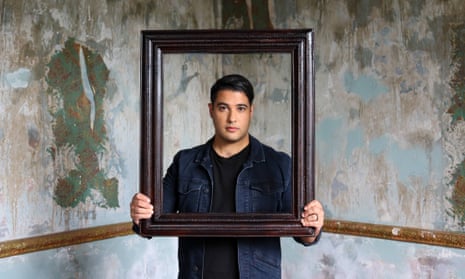In the mid-1980s, the Melbourne arts community was divided. In the underground, there was a vibrant punk music and arts scene, while the big arts institutions, such as the National Gallery of Victoria, were seen as old-school and out of date – unsupportive of young artists and lavishing precious public funds on overseas acquisitions.
One such purchase was Picasso’s The Weeping Woman, painted about the same time as his famous Guernica. The flamboyant NGV gallery director Patrick McCaughey bought the artwork for a staggering (at the time) $1.6m. But the terrible Australian dollar meant the sale price was actually closer to $2m.
McCaughey predicted that the lurid lime green and purple Picasso “will haunt Melbourne for the next 100 years”. His prediction turned out to be true – but for all the wrong reasons. In 1986, not long after excitedly introducing The Weeping Woman to the city, it went missing.
Who stole Picasso’s painting from the NGV is the subject of a four-part SBS documentary called Framed, presented by The Feed’s Marc Fennell.

As the documentary reveals, it took a couple of days for the painting’s theft to be noticed. A note on the wall said it had been relocated to “the ACT”. Staff and visitors assumed it had been relocated to a gallery in the ACT – the Australian Capital Territory – until the Age received a typewritten letter signed by the “Australian Cultural Terrorists”.
This group claimed responsibility for stealing the Picasso and said the painting would be destroyed in a week if their demands were not met. The Victorian arts minister at the time, Race Mathews, who was also the police minister, was singled out in the letter for “the clumsy, unimaginative stupidity of the administration” in this “hick State”. The Australian Cultural Terrorists made a list of demands, including more funding for the arts and a prize for young Australian artists.
The theft of The Weeping Woman became hot news around the world. It had all the ingredients of a great story: the stuttering, bow-tie wearing, charismatic NGV head McCaughey pleading for the (uninsured) painting to be returned; the brazen, articulate and verbally aggressive thieves; the huge police operation that included draining the moat around the NGV; and then the rumour network set alight with everyone seeming to know who did it but nobody agreeing who it was.
Using a mix of re-enactments and interviews, Fennell has assembled a mix of people who were there at the time, including the journalist Virginia Trioli, the then chief conservator of the NGV, Thomas Dixon, the cultural critic and journalist Ashley Crawford, the artist and activist Gabrielle de Vietri, the journalist Margaret Simon and a former detective sergeant, Bob Quigley.
It’s interesting how differently things played out in 1986. There was little security at the gallery, including no CCTV, and the brand of typewriter used to write the ransom notes was key to finding the perpetrator. It’s the sort of story you assume couldn’t happen now.
The painting later turned up unharmed in a locker at Spencer Street station but the crime was never solved. Thirty-five years later, the story is still captivating.

Comments (…)
Sign in or create your Guardian account to join the discussion